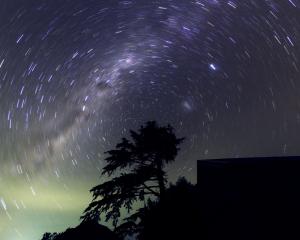
The rising and setting of the sun is the most familiar celestial pattern. Each daily sunrise and sunset paints the sky with the palette of day and night. Earth’s rotation sets the tone for what is to come. It provides a regular heartbeat by which we can measure and anticipate longer cosmic processes, such as the phase of the moon or the sun’s annual apparent motion around the sky.
At night, the appearance or disappearance of particular constellations or asterisms has helped astronomers from many cultures record the change in seasons; for example, the appearance of Matariki before dawn in June or July marks the beginning of the Māori new year, signalling it is time to start planning and preparing for spring.

The galactic core becomes visible in the morning sky in spring, is high overhead at midnight in winter and its disappearance into the sunset at this time of year informs us that summer is just around the corner.
Watching the so-called galactic kiwi slowly disappear below the horizon as the sky darkens is, for me, one of the finest sights in the heavens. Farewell, my galactic friend, see you again in autumn!











